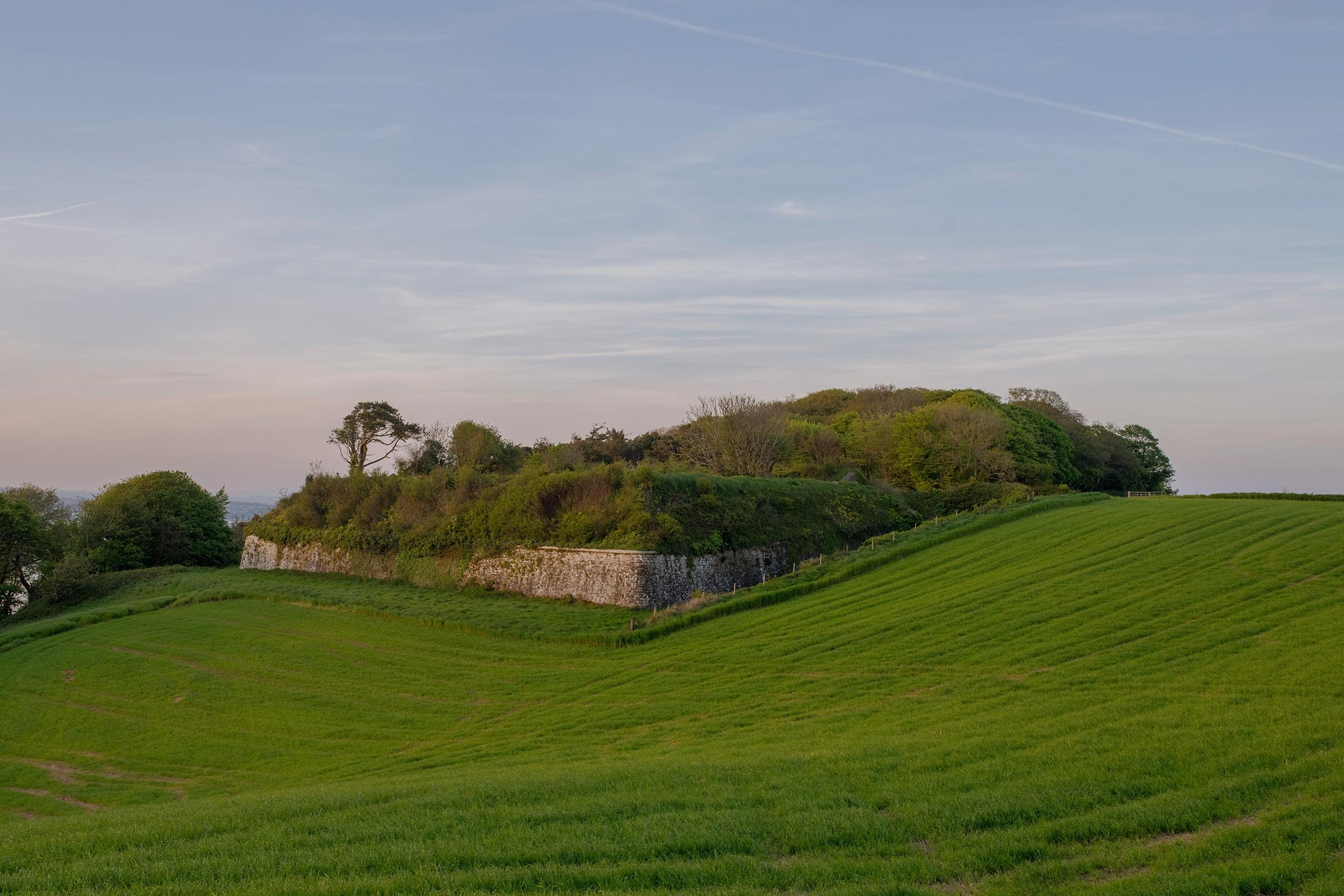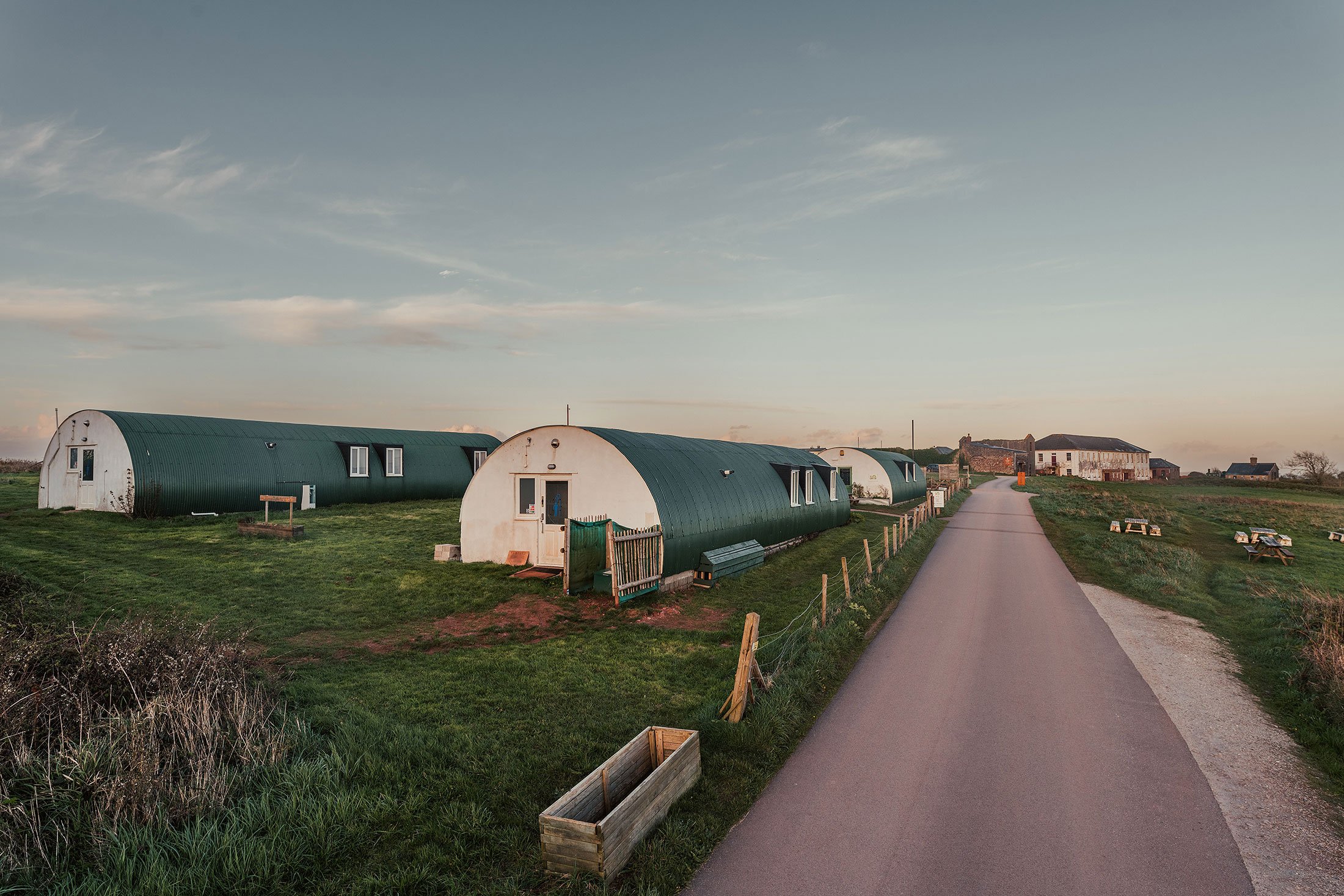
Redoubt No.5
Redoubt No. 5
Redoubt No. 5 is the northernmost of the five Redoubts built across Maker Heights in 1779. It was sited to overlook Millbrook estuary and designed to cover the north side of this part of the Rame Peninsula. Redoubt No.5 was constructed by soldiers of the 2nd Devon Regiment under the supervision of the Royal Engineers. Originally an earthwork, the Redoubt suffered immediately with serious weather degradation, and as a result was, along with Redoubt No.4, stone revetted by 1782.
Like Redoubt No.4, Redoubt No.5 was subsequently strengthened by 1791 with the addition of a defensible barrack block. This was designed, to defend the landward side of the Redoubt with angled loopholes pointing inwards to cover the wooden drawbridge. Again, as in Redoubt No.4, the barracks were constructed to a height to give protection to the gunners on the opposite ramparts, and were brick vaulted with a stone ‘bursting’ course to absorb cannon shot. The roof was then slated.
A brick vaulted powder magazine was built under the barracks, and a survey in 2023 confirmed this remains intact. It is very cleverly constructed with a drainage and ventilation system that still works today, nearly 250 years later.
Redoubt No.5 was fully manned and armed in the 1790’s and is recorded in 1811 as having nine cannon – two on the north side, four on the west side and three on the south side. The Redoubt has a dry moat on its eastern and southern elevations.
As with all the Redoubts, Redoubt No. 5 was de-commissioned in 1815 when the French threat ceased after the battle of Waterloo. Some 40 years later, when a reappraisal of a French threat prompted a Royal Commission to report on what turned out to be a huge national fort building program, Redoubt No.5 was considered redundant as a military site. This has led it to being a rare time capsule where no military re-engineering has been undertaken since the 1790’s and its original design and construction remains largely intact.
Research suggests Redoubt No. 5 was subsequently used as military housing, and in the 1901 census it was recorded that Arthur Gober, military foreman, lived there with his wife and 6 children. This domestic use would explain the opening up of some of the loopholes to provide more light.
Now Redoubt No.5 is in urgent need of restoration. Currently the barrack rooms are unsafe and have been timber supported after a structural survey.
There is currently further research into the domestic usage of Redoubt No.5 where it is thought families lived for several generations up until the mid 1950’s when the older bridge collapsed. It is also thought to have been used by wartime evacuees from the Plymouth blitz of 1940/41.
Redoubt No. 5 is now cared for by the Rame Conservation Trust and building stabilisation and vegetation management programs are under way with the support of Historic England. New entrance doors have been fitted together with a replacement wooden access bridge across the dry moat.
Redoubt 5 is a scheduled monument. It is open to the public by pre-arrangement and guided tours are available during the Heritage Open Days festival in September. If you would like a tour of Redoubt No. 5 please contact us. Organised groups are welcome.
Redoubt No.5 gallery


























